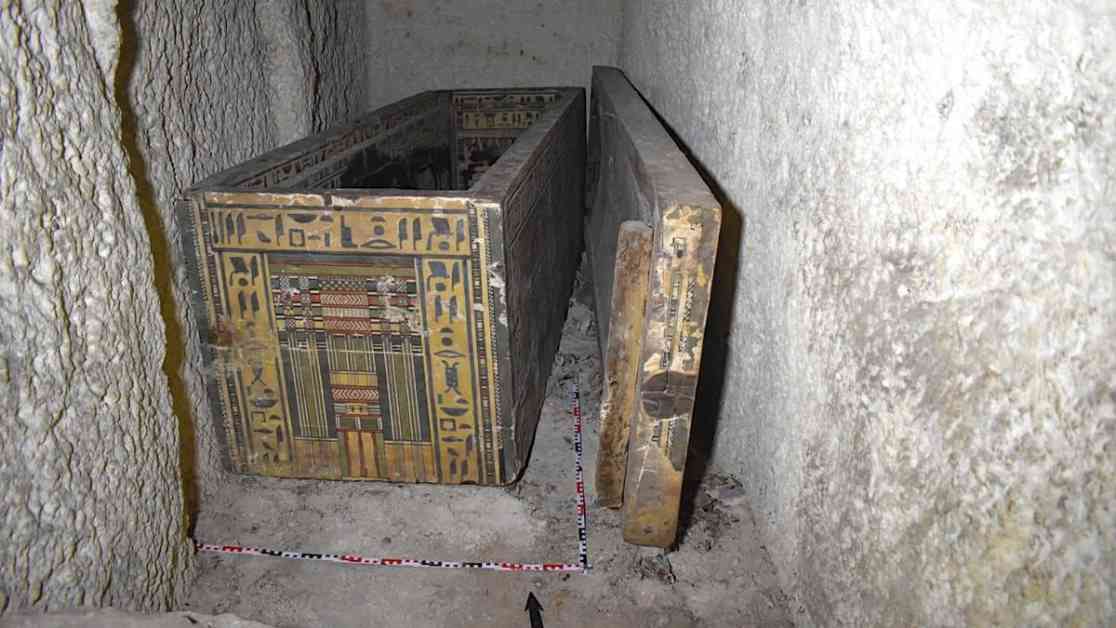Archaeologists made a remarkable discovery of a 4,000-year-old tomb in Egypt belonging to “Idi,” a governor’s daughter from the Middle Kingdom period. The tomb contained two coffins, one inside the other, adorned with intricate hieroglyphic inscriptions. These inscriptions were believed to guide the deceased in the afterlife.
This finding is significant, according to experts like Kathlyn Cooney from UCLA and Caroline Arbuckle from the University of Saskatchewan. The coffin texts offer valuable insights into ancient Egyptian beliefs about the underworld and the afterlife. By studying these texts, researchers hope to gain a better understanding of the Egyptians’ fears and desires related to their journey to eternal paradise.
Idi was the daughter of Djefaihapi, the governor of Asyut, a prosperous province during her time. Despite the tomb being looted in ancient times, parts of Idi’s skeleton were still intact. Analysis revealed that she likely died before the age of 40 and had a congenital foot defect.
The larger coffin measured 8.6 feet long, while the smaller one was 7.5 feet long. Alongside the coffins, archaeologists found a coffin lid and wooden figurines, one of which may depict Idi. Francesco Tiradritti, an Egyptology professor, suggested that another figurine might represent Idi’s soul leaving the tomb.
The hieroglyphs on the coffin referred to Idi as the “lady of the house,” a common title for women in ancient Egypt. This finding, according to Egyptologist Wolfram Grajetzki, adds to the understanding of Idi’s social status and role in society.
The discovery of Idi’s tomb by a modern and legitimate excavation team is crucial, given the history of illegal excavations in the region. Many artifacts from Asyut have ended up in museums worldwide due to unauthorized digs. Grajetzki appreciates the proper recording and publication of this find by the University of Sohag and The Free University of Berlin.
This discovery sheds light on the life and death of Idi, offering a glimpse into the beliefs and practices of ancient Egyptians during the Middle Kingdom period. The intricate coffin texts and artifacts found in the tomb provide valuable insights for researchers studying ancient Egyptian funerary practices and beliefs. This finding adds to the growing body of knowledge about ancient Egyptian society and customs, enriching our understanding of this fascinating civilization.










